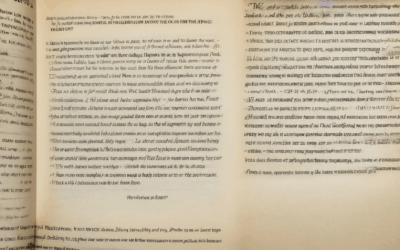Exploring the intricate dance between peace and gratitude offers profound insights into the essence of human well-being. Essays on the intersection of these two concepts delve into how gratitude fosters inner peace and how a peaceful mindset cultivates gratitude, creating a harmonious cycle of emotional balance. From uncovering the psychological benefits of expressing thanks to examining the cultural practices that honor gratitude, these essays provide a rich tapestry of knowledge. Whether you’re seeking to deepen your own understanding or gain practical wisdom, this exploration reveals how gratitude and peace intersect to shape meaningful lives. By examining these themes through the lens of thought-provoking essays, we unlock actionable lessons that transcend individual experiences, resonating across diverse cultural contexts and fostering a deeper appreciation for the world around us.
Key Takeaways
– Gratitude practices significantly reduce stress, anxiety, and depression, fostering inner peace and mental well-being.
– Regular expression of gratitude enhances emotional resilience and contributes to a calmer, more harmonious mindset.
– Strengthening relationships through gratitude leads to greater social bonds, security, and overall fulfillment.
– Incorporating gratitude into daily routines, such as journaling or acts of kindness, promotes mental health and inner peace.
– Essays highlight the universal role of gratitude across various cultures and historical contexts, emphasizing its importance in well-being.
– Gratitude and peace are interdependent: gratitude fosters inner peace, while peaceful environments nurture a disposition of appreciation.
– A more grateful society can foster collective peace by encouraging collaboration and conflict resolution.
– Addressing systemic issues alongside personal well-being is essential for achieving sustainable peace and harmony.

Essays Exploring the Interplay Between Peace and Gratitude
The relationship between peace and gratitude is a fascinating subject explored in various personal stories and reflective essays. These works delve into how gratitude influences our perception of peace and how inner harmony contributes to overall well-being.
- 1. “Finding Inner Peace Through Gratitude” This essay explores how cultivating gratitude can lead to a deeper sense of inner peace. By focusing on moments of joy and kindness, individuals can foster a more serene and harmonious existence. Read More
- 2. “Gratitude and Community Building” Examining how expressions of gratitude strengthen social bonds and contribute to collective peace. This essay highlights the role of appreciation in fostering stronger communities and societal harmony. Read More
- 3. “The Role of Gratitude in Achieving Personal Peace” Discussing how gratitude practices can aid individuals in finding personal peace. This essay emphasizes the importance of mindfulness and appreciation in achieving inner calm and stability. Read More
How Do Essays on Peace and Gratitude Provide Insight into Personal Growth?
Essays on peace and gratitude offer profound insights into personal growth by fostering introspection and emotional awareness. Through reflective writing, individuals gain clarity on their values, beliefs, and life experiences.
- Exploration of Inner Worlds: Essays on peace and gratitude invite readers to delve into their innermost thoughts and emotions. By documenting personal journeys, authors reveal how cultivating peace and gratitude enhances mental well-being and fosters resilience.
- Reflection and Self-Discovery: The act of writing about peace and gratitude encourages readers to reflect on their lives. This reflection often leads to a deeper understanding of personal strengths and areas for growth, promoting self-awareness and empathy.
- Connection to Others: These essays resonate with readers by highlighting universal themes. They remind us that peace and gratitude are shared human experiences, fostering a sense of community and shared purpose.
- Actionable Inspiration: The insights gained from reading such essays can motivate individuals to adopt peaceful practices and cultivate gratitude in their daily lives, leading to sustained personal growth.
By exploring these themes, essays on peace and gratitude not only illuminate individual journeys but also inspire collective transformation, making them a powerful tool for fostering personal and communal development.
For more thought-provoking essays and reflections, visit Peter Spirito , a platform dedicated to meaningful storytelling and personal growth.

What Do Essays on Peace and Gratitude Reveal About the Impact of Gratitude on Achieving Inner Peace?
Essays on peace and gratitude explore the profound relationship between gratitude and inner peace, highlighting how practicing gratitude significantly influences mental and emotional well-being. Research and personal reflections consistently indicate that gratitude plays a crucial role in fostering inner peace, offering numerous psychological and emotional benefits.
- Reduction of Stress and Anxiety: Gratitude practices, such as journaling or mindful appreciation, have been shown to reduce stress and anxiety. By focusing on the positive aspects of life, individuals cultivate a calmer mindset, which is essential for achieving inner peace.
- Fostering Social Connections: Expressing gratitude encourages individuals to appreciate others, strengthening relationships. Strong social bonds provide a sense of security and belonging, both of which contribute to inner peace.
- Enhancing Mindfulness: Gratitude practices often involve reflection, which enhances mindfulness. Mindfulness reduces stress and increases emotional resilience, supporting inner peace by helping individuals stay grounded and balanced.
- Catalyzing Personal Growth: Recognizing things to be grateful for shifts perspectives toward positivity and abundance. This mindset enables individuals to approach challenges with greater confidence and resilience, fostering inner strength and peace.
- Improving Physical Health: Gratitude has been linked to better physical health, which indirectly contributes to inner peace. Enhanced well-being reduces the likelihood of anxiety and stress, further stabilizing emotional states.
- Cultural Influence: Across various cultures, gratitude is valued for its role in fostering harmony and well-being. Essays illustrate how gratitude’s impact on inner peace varies yet remains significant globally.
- Long-Term Benefits: Consistent practices of gratitude, such as journaling, lead to lasting changes in mindset. These changes solidify inner peace, demonstrating the sustained positive effects of cultivating a grateful attitude.

How Do Essays on Peace and Gratitude Reveal the Impact of Gratitude on Achieving Inner Peace?
Essays on peace and gratitude explore the profound connection between cultivating gratitude and finding inner peace. Through introspective storytelling, writers often reveal how practicing gratitude fosters a sense of calmness and harmony within individuals. These essays frequently highlight how simple acts of appreciation can lead to significant emotional and psychological benefits, ultimately contributing to overall well-being.
The Role of Gratitude in Mental Health
One key theme in essays on peace and gratitude is the positive impact of gratitude on mental health. Studies suggest that regularly expressing gratitude can reduce stress, anxiety, and depression by shifting focus away from negative thoughts. Essays often detail personal journeys where individuals overcome emotional struggles through mindful appreciation of life’s small joys, illustrating how this practice cultivates inner peace.
Gratitude and Relationship Building
Another area addressed in these essays is the role of gratitude in fostering stronger connections with others. Many pieces discuss how appreciating loved ones and community members enhances social bonds, leading to greater feelings of security and fulfillment. This interconnectedness contributes to a sense of inner peace, as individuals feel more grounded and supported in their lives.
Practical Applications of Gratitude Practice
Essays on peace and gratitude also delve into practical ways to incorporate gratitude into daily routines. Common suggestions include journaling a few things one is grateful for each day, offering heartfelt thanks to others, or engaging in random acts of kindness. These practices are often cited as effective tools for maintaining inner peace, even during challenging times.
Cultural and Historical Perspectives
Scholarly essays on this topic may also explore cultural and historical perspectives on gratitude. Ancient philosophies, religious teachings, and modern psychological studies all offer unique insights into the enduring importance of gratitude as a pathway to inner peace. These discussions highlight how different traditions have long recognized gratitude as a cornerstone of well-being.
For deeper exploration, visit Peter Spirito to discover thought-provoking essays on gratitude and its transformative power. Learn how these narratives can inspire your own journey toward inner peace and a more fulfilling life.
The Interplay Between Peace and Gratitude in Essays
The interplay between peace and gratitude explored in essays delves into the intricate relationship between these two concepts, highlighting how they mutually reinforce each other and contribute to overall well-being. Essays often examine how gratitude fosters a sense of inner peace and how peaceful environments cultivate a disposition of appreciation and thankfulness.
One central theme in such discussions is the role of gratitude in cultivating peace. Studies suggest that regularly expressing gratitude can reduce stress, enhance emotional resilience, and foster a more serene mindset. This is often illustrated through personal anecdotes and case studies where individuals who practice gratitude report experiencing greater inner peace despite external challenges.
Additionally, essays may explore how a peaceful society or personal environment encourages gratitude. For instance, living in harmony with others or nature can inspire a sense of appreciation for the simple joys of life. This interdependence is further highlighted in cultural contexts where traditions emphasizing gratitude, such as festivals or rituals, are closely tied to communal peace.
Another area of exploration is the psychological impact of gratitude on peace. Research indicates that gratitude practices, like journaling or meditation, can significantly lower levels of anxiety and depression, thereby contributing to mental peace. Essays often draw parallels between mindfulness practices rooted in gratitude and their therapeutic effects on mental health.
Moreover, the essays may discuss the broader implications of this interplay. Promoting gratitude on a societal level can lead to collective peace, as a more appreciative population is better equipped to handle conflicts and work collaboratively toward solutions. This idea is often supported by real-world examples of initiatives aimed at fostering gratitude in schools, workplaces, and communities.
Ultimately, the interplay between peace and gratitude is a rich subject in essays, offering insights into the interconnectedness of personal and societal well-being. By understanding how gratitude begets peace and vice versa, individuals and communities can work toward creating more harmonious and fulfilling lives.
Peter Spirito explores these themes in-depth on his blog, offering thought-provoking essays that delve into the intersection of gratitude and peace.

Insights from Essays on Peace and Gratitude
Essays exploring the relationship between peace and gratitude reveal a fascinating interplay between these two concepts. While they are distinct, they significantly influence each other, offering profound insights into human well-being and societal harmony.
The Role of Gratitude in Fostering Peace
Gratitude serves as a powerful tool for cultivating inner peace. Studies suggest that individuals who regularly practice gratitude tend to experience reduced stress and heightened emotional resilience. This mindfulness of positive aspects in life fosters a sense of calm and harmony, contributing to overall peace. By appreciating the present, people are less likely to dwell on negative experiences, thereby promoting inner tranquility.
The Role of Peace in Nurturing Gratitude
Conversely, peace plays a crucial role in nurturing gratitude. A peaceful environment allows individuals to approach life with a more open heart, making it easier to acknowledge and appreciate the good things around them. Inner peace enables individuals to engage with the world more positively, fostering gratitude as a natural response to life’s blessings.
The Interdependence of Peace and Gratitude
Essays highlight that peace and gratitude are deeply interconnected. Gratitude enhances inner peace, which in turn promotes social harmony. Conversely, a peaceful existence supports the cultivation of gratitude, creating a virtuous cycle. This interdependence underscores the importance of both concepts in sustaining individual and collective well-being.
Cultural and Practical Implications
Culturally, expressions of gratitude vary, yet they consistently contribute to feelings of peace. Practices like gratitude journaling or communal celebrations reinforce this connection. Practically, integrating gratitude into daily routines can significantly enhance mental health, which is essential for maintaining peace. However, it’s crucial to recognize that gratitude alone cannot overlook systemic issues; true peace requires addressing injustice and fostering equity.
Conclusion
In essence, essays on peace and gratitude illuminate how these concepts mutually support each other. Gratitude fosters inner peace, while peace nurtures an environment conducive to gratitude. Together, they offer a pathway toward a more harmonious and fulfilling life, emphasizing the importance of balance and compassion in achieving lasting well-being.




0 Comments